Blurred vision after corneal cross-linking may last anywhere from a few days to several weeks, depending on individual healing processes and the specifics of the treatment performed.
While this visual change is a normal part of recovery, understanding what to expect can help you manage the process better.
Corneal cross-linking, often performed to treat keratoconus, is a well-established procedure that strengthens the cornea by using UV light and riboflavin drops. Though highly effective in halting disease progression, recovery from this surgery often involves temporary vision disturbances. If you’ve just undergone this procedure or are considering it as a treatment option, here’s everything you need to know about how long blurred vision lasts post-surgery and what might influence your recovery experience.
Why Does Vision Become Blurred After Cross-Linking?
After cross-linking, a layer of your cornea is removed before applying riboflavin and exposing the area to ultraviolet light. This temporary removal leads to surface disruption and swelling, which can initially cause difficulty focusing. Furthermore, the epithelial cells, which act as a protective barrier for your cornea, need to regenerate before your vision stabilises.
Other contributing factors include:
- Corneal swelling (oedema): The UV light and liquid used during the treatment may induce swelling, which distorts the corneal surface temporarily.
- Healing process: New epithelial tissues form post-procedure, and it takes time for them to settle, impacting clarity.
- Potential haze: Some patients experience corneal haze (typically transient) during recovery, making their surroundings appear misty.
Understanding these causes can set realistic expectations, so the adjustment phase feels less daunting.
What Is the Typical Timeline for Visual Recovery?
Days 1–3 Post-Treatment
During this period, vision tends to be at its blurriest due to the healing surface layer and temporary swelling. Patients often report discomfort, sensitivity to light, and noticeable reductions in sharpness. Particularly for those who have undergone epithelium-off cross-linking (Epi-off), the symptoms might feel more pronounced compared to epithelium-on (Epi-on) variations, where the surface layer is preserved.
Note: It’s important to remember that cross-linking doesn’t typically improve vision immediately, as the goal is to stabilise keratoconus, not correct refractive error—unless combined with other treatments later (like PRK or speciality lenses).
Most individuals will notice gradual improvements in sensitivity and light tolerance within the first 72 hours, even though their vision remains incomplete.
Week 1–2 Post-Treatment
By the first or second week, ongoing epithelial healing significantly reduces cloudiness for many patients. The previously disturbed outer corneal layer starts regaining its uniformity, which gradually improves focus and sharpness. However, mild irregularities may persist due to incomplete smoothing of the epithelial cells.
Month 1
By the end of one month, the majority of patients observe substantial visual clarity, with only minor disturbances remaining. At this stage:
- You may start noticing improved contrast sensitivity.
- Most daily activities, like looking at screens or commuting, feel more manageable.
Month 3 and Beyond
Complete normalisation of vision can take 3–6 months for some individuals, especially in cases of advanced keratoconus or aggressive progression. By this stage, any lingering corneal haze or epithelial roughness typically subsides, offering sharper, clearer results.
Keep in mind that every patient’s healing period can differ, and factors like age, overall corneal condition, and adherence to post-operative care play a significant role.
Factors That Impact the Duration of Blurred Vision
Recovering from blurred vision is not a one-size-fits-all timeline. Multiple factors contribute to how quickly or slowly the eye heals after cross-linking, including:
1. Type of Cross-Linking Technique
- Epi-off Cross-Linking: This traditional method exposes the corneal layer directly, resulting in a longer recovery timeline. Vision may remain hazy for several weeks.
- Epi-on Cross-Linking: Preserving the epithelium reduces initial disruptions, and patients typically experience minimal visual disturbances during recovery.
2. Severity of Keratoconus
Patients in advanced stages of the condition may experience extended visual instability because their corneas are already thinner or more irregular compared to those in early stages.
3. Age and Healing Response
Younger individuals often enjoy slightly faster recovery thanks to their body’s robust regenerative capabilities. That said, general health and eye nourishment also influence results across age groups.
4. Quality of Post-Surgical Care
- Hydration: Drinking water can help alleviate sensations linked to swelling or dryness during recovery.
- Scheduled Medications: Anti-inflammatory eye drops are primarily prescribed after surgery to minimise swelling or infection risk.
- Adherence to Guidelines: Preventive measures like avoiding rubbing the eyes or exposing them to harsh environments greatly reduce vision recovery delays.
How Can You Alleviate Blurred Vision Post-Cross-Linking?
While some level of visual impairment is inevitable after the procedure, taking proactive steps can minimise discomfort and accelerate clarity.
Protect Your Eyes
Wearing protective eyewear or using goggles ensures minimal exposure to dust or environmental irritants during the first few weeks. Blue-light-blocking glasses may also reduce strain when working on laptops or phones as part of precautionary living adjustments.
Follow the Medication Routine
Your ophthalmologist’s prescription may include antibiotics, lubricating drops, and anti-inflammatory medications. Strictly adhering to this regime allows for smoother healing and prevents complications.
Be Patient with Healing Fluctuations
It’s not uncommon for patients to feel frustrated during the early stages of recovery. However, understanding that these changes are part of the natural process can aid emotional readiness.
Attend Follow-Ups Consistently
Regular check-ups allow your eye care professional to track your progress and address any early complications. Timely intervention for issues like excessive corneal haze ensures uninterrupted healing, reducing the overall timeline.
Visual Improvement Milestones Post-Cross-Linking
Key Signs That Indicate Progress
- Reduced Sensitivity to Light: Gradual improvement in light tolerance often occurs within a week.
- Less Haze: The peak of visible distortion will likely diminish as epithelial cells stabilise.
- Better Focus on Close-up/Distance Viewing Tasks: Functional tasks like reading small text or identifying distant objects become smoother with time.
Recognising these signs can help you stay encouraged throughout the recovery process since concrete benchmarks significantly boost morale during healing windows of uncertainty.
Should You Be Concerned About Prolonged Blurriness?
While short-term haziness is expected, certain scenarios warrant immediate consultation with your ophthalmologist:
- No Improvement After Six Weeks: If vision hasn’t improved at all by this stage, further examination is crucial.
- Worsened Clarity Beyond Two Months: While rare, issues like exacerbated corneal haze or infections require proper attention.
- Unusual Discomfort: Persistent pain, redness, or swelling may signal complications best addressed early on.
Seeking help promptly ensures peace of mind while preventing risks that otherwise hinder a smooth recovery.
See the Bigger Picture
Ultimately, recovering your visual clarity after corneal cross-linking requires patience and consistent care. Blurred vision typically subsides for most patients within weeks to a few months, particularly with diligent adherence to post-operative instructions.
While the waiting period varies by individual, post-procedure outcomes almost universally offer better visual stability, enhanced quality of life, and halted disease progression for keratoconus patients.
If you’re planning for cross-linking or navigating recovery but seeking clarity, consult with your ophthalmologist to fully understand expectations tailored specifically for your condition. Comprehensive communication amplifies trust and fosters optimal recovery experiences for patients across the spectrum.


